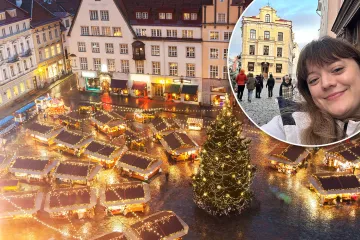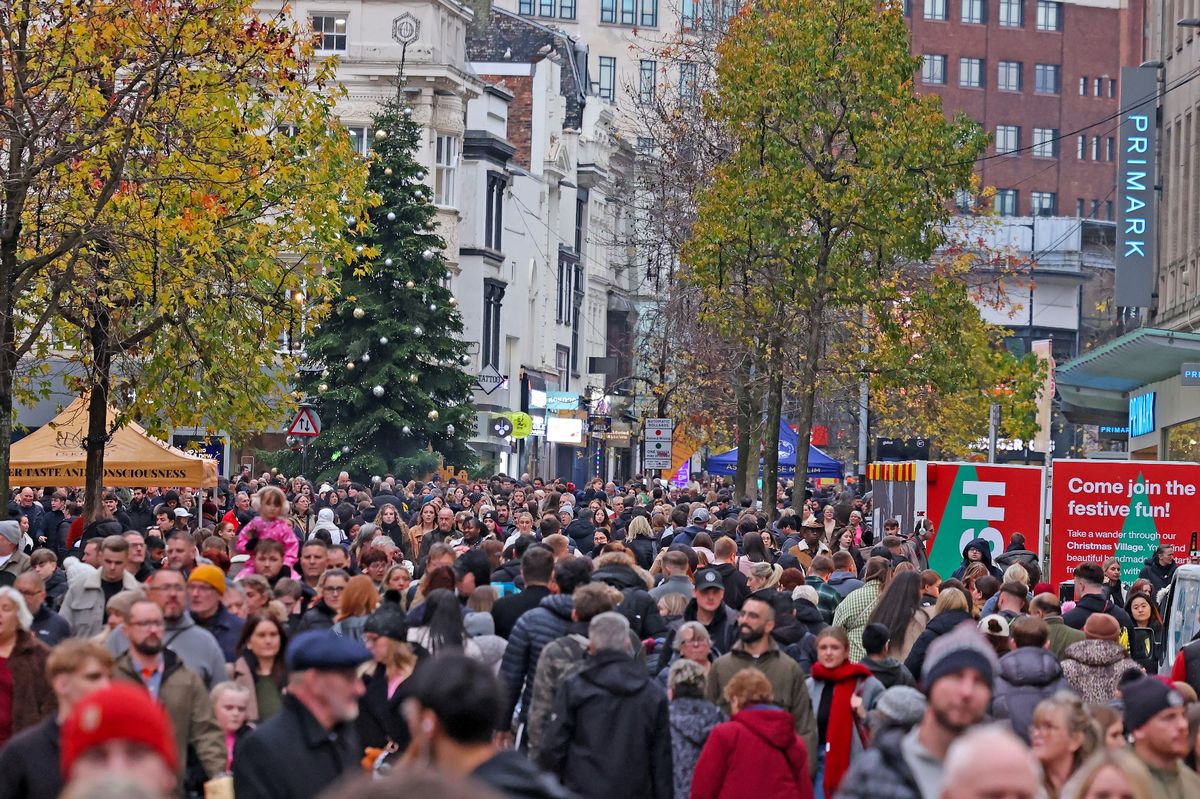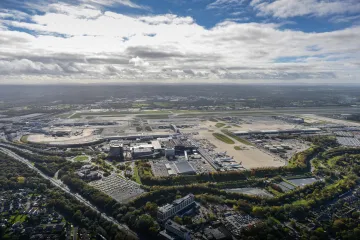After travelling to nine Spanish cities over several years, two stole my heart with their ancient culture, stunning architecture and unique atmosphere – and you can explore them both by train
Over the years, Spain has become one of my favourite places to visit. Mallorca was the first foreign place I visited as a young adult in the 1990s – and I’ve returned there numerous times since. Mallorca’s capital city, Palma is a splendid destination for a winter break, but there are two lesser-known Spanish cities that have truly left an impression on me.
In total, I’ve journeyed to nine Spanish cities over several years, each one special and distinct in its own way. From inland Madrid to vibrant Seville or the coastal southern province of Cádiz, every location has been memorable and unique, reports the Express.
I’ve visited Barcelona a couple of times, even spending several months there once, and while it’s a fantastic city, it was two other Spanish cities that truly captured my heart. The first city that enchanted me is described by Lonely Planet as “truly one of Spain’s most magnificent cities” – and I wholeheartedly agree. It’s an ancient city not far from Madrid named Toledo.
I visited this historic place alone several years ago, outside of the busy season, so there were hardly any tourists. However, like many other places, Toledo can sometimes draw too many visitors these days.
This atmospheric place is an old walled city with a haunting aura of past lives; you can almost feel the layers of history that have unfolded in Toledo. This ancient city is perched on a hill, encircled by the Tagus River (El Rio Tajo in Spanish).
When I stepped off the train from Madrid, the sight of Toledo genuinely took my breath away – at first glance I mistook the river for a moat, though I’ve since learnt that it winds naturally around the hill upon which this city sits. Lonely Planet noted that Toledo “was known as the ‘city of three cultures’ in the Middle Ages” where “Christian, Muslim and Jewish communities peacefully coexisted”.
Yet even today, it’s that sense of diverse culture that feels compelling and somehow magical, as if it’s been absorbed into the walls of the ancient buildings here. There are mosques, synagogues and one of Spain’s “finest Gothic cathedrals” within this city.
Historically, Toledo is said to have been named by the Romans before later becoming an Arabic fortress. The old town area is brimming with history, featuring sights such as the “Puerta de Valmardon” – the oldest city gate within the walls.
The most ancient monument still standing in Toledo is believed to be the Cristo de la Luz Mosque, constructed in the year 999, though throughout this sprawling city, you’ll discover so much of interest spanning numerous eras.
Now onto my next most memorable Spanish city, perhaps even less well-known than Toledo – and you can actually catch a train from Toledo to get to this next beautiful destination: Córdoba. I’ve explored much of Spain via rail journeys – and I’d thoroughly recommend it.
You get to see so much of the countryside when you travel by train abroad. The Spanish city of Córdoba, nestled in the Andalusia province in the south of Spain, is a city I had the pleasure of visiting a few years ago – and it’s another very memorable place.
After spending two days in Seville, having initially flown into Malaga, Córdoba was less than an hour’s train ride away from Seville – and what a captivating place it turned out to be.
Set on the banks of the Guadalquivir River, which flows from Seville to Cádiz, Córdoba is brimming with nature and wildlife. The Sierra Morena Mountains provide a stunning backdrop to Córdoba.
I visited Córdoba in October when it was still quite hot, with daytime temperatures reaching 40C. While I would recommend visiting at a cooler time of year, the city was incredibly atmospheric.
Known as the ‘city of flowers’, Córdoba is adorned with floral decorations in its streets, on monuments and balconies. One particularly vibrant street is the Calleja de las Flores.
One of the city’s most awe-inspiring features is the Roman Bridge of Córdoba. Featured in series 5 of Game of Thrones as the “Long Bridge of Volantis”, it offers exceptional views and tranquil riverside walks.
The city itself is bustling, and at its heart lies the Mezquita Cathedral de Córdoba. This unique mosque-cathedral is an incredible structure that was once under Moorish rule centuries ago before being converted into a Catholic cathedral.
Córdoba, set amidst ancient surroundings, exudes a lively atmosphere. Every glance reveals something intriguing, from the whitewashed or vibrantly coloured homes to the unspoilt cobbled streets.
It’s an unforgettable destination, offering a blend of culture and delectable cuisine, such as the Córdoban Salmorejo soup – a delightful concoction of garlic, tomato and olive oil, even served at breakfast.
My journey through this city was part of a larger adventure that included visits to Malaga, Seville, Córdoba and the coastal city of Cádiz. Each of these places had its own unique charm.
Fringed by the Atlantic Ocean, it’s no surprise that Cádiz is renowned for its fried seafood selection – incredibly fresh and delicious.
The city’s central market (Mercado Central) is a treasure trove of stalls including local fish and irresistibly sweet churros. The market has a truly local feel; while tourists do visit, they’re not as prevalent as in other Spanish seaside locations.
In this city, which gazes out across the ocean towards Morocco and beyond, the daily and frequent tolling of bells from the Cádiz Cathedral adds to the continental ambiance.
A stroll along the coast here is simply beautiful, with sandy beaches lining the way. Although the sea was rough during my October visit, preventing me from swimming, the water temperature remained pleasantly warm.
Touring the cities of Andalusia was a fantastic way to experience this region of Spain and it’s something I’d certainly do again. In my view, it’s incredibly rewarding to see several different places in one exploratory holiday.
There’s another city worth mentioning at the opposite end of the country in north-eastern Spain, which I visited on a separate occasion – Girona.
Girona is less than an hour by train from Barcelona. I made the journey there from the beach resort of Lloret de Mar while on holiday – it’s another captivating city with a remarkable old town.
While in Girona’s old town, I explored the Passeig de la Muralla, which has numerous steps leading to high points offering stunning views of the surrounding province. Although this city is inland, there are several beach areas just a short drive or train ride away.
Girona is a blend of ancient structures and vibrant new buildings. Spain’s official tourism website describes this city as being “of Roman origin with medieval, Romanesque, Gothic and modernist architecture”.
This city also served as another Spanish filming location for Game of Thrones.




















